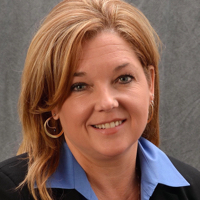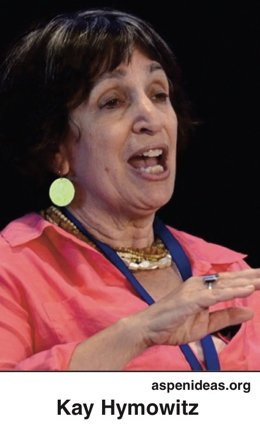Rascals case in brief
In the beginning, in 1989, more than 90 children at the Little Rascals Day Care Center in Edenton, North Carolina, accused a total of 20 adults with 429 instances of sexual abuse over a three-year period. It may have all begun with one parent’s complaint about punishment given her child.
Among the alleged perpetrators: the sheriff and mayor. But prosecutors would charge only Robin Byrum, Darlene Harris, Elizabeth “Betsy” Kelly, Robert “Bob” Kelly, Willard Scott Privott, Shelley Stone and Dawn Wilson – the Edenton 7.
Along with sodomy and beatings, allegations included a baby killed with a handgun, a child being hung upside down from a tree and being set on fire and countless other fantastic incidents involving spaceships, hot air balloons, pirate ships and trained sharks.
By the time prosecutors dropped the last charges in 1997, Little Rascals had become North Carolina’s longest and most costly criminal trial. Prosecutors kept defendants jailed in hopes at least one would turn against their supposed co-conspirators. Remarkably, none did. Another shameful record: Five defendants had to wait longer to face their accusers in court than anyone else in North Carolina history.
Between 1991 and 1997, Ofra Bikel produced three extraordinary episodes on the Little Rascals case for the PBS series “Frontline.” Although “Innocence Lost” did not deter prosecutors, it exposed their tactics and fostered nationwide skepticism and dismay.
With each passing year, the absurdity of the Little Rascals charges has become more obvious. But no admission of error has ever come from prosecutors, police, interviewers or parents. This site is devoted to the issues raised by this case.
On Facebook
Click for earlier Facebook posts archived on this site
Click to go to
Today’s random selection from the Little Rascals Day Care archives….
Click for earlier Facebook posts archived on this site
Click to go to
Today’s random selection from the Little Rascals Day Care archives….
When adversarial system doesn’t lead to justice

ncaj.com
Christine Mumma
May 26, 2016
“I would like to see more cooperation between prosecutors and defense attorneys in their efforts to achieve justice, particularly when there is a credible post-conviction claim of innocence. The overloaded, underfunded, and often inefficient adversarial system doesn’t have to be the approach when common sense and a shared interest in justice can more quickly address injustices for the convicted and victims of crime.
“Prosecutorial conviction integrity units around the country have made that clear, but the North Carolina Conference of District Attorneys seems to be encouraging less cooperation, not more.”
– Christine Mumma, quoted by the North Carolina Advocates for Justice
Mumma, of course, has famously endured the wrath of prosecutors whose autocracy she challenged.
You can like the North Carolina Conference of District Attorneys on Facebook.
Or not.
![]()
Suppose you gave a lynch party, and nobody came?
July 18, 2012
“Law enforcement officials are teaming up with social services experts to investigate and more effectively prosecute child sexual abuse in North Carolina day-care facilities….
“State Bureau of Investigation Director Charles Dunn said… the goal is to train up to 300 individuals in the state’s largest cities.
“Under the protocol, agencies in counties would establish guidelines for interagency task forces. Each task force would include an investigative unit and a resource unit.
“The typical investigative unit would include a child protective services social worker, law enforcement officer, consultant from the state day-care licensing agency and an SBI agent.
“The resource unit might include medical personnel, SBI lab experts, mental health workers and representatives of the attorney general’s and local district attorney’s offices…
“The General Assembly (this year required) SBI notification within 24 hours of any report of sexual abuse in a day-care setting. ‘The Little Rascals case really just helped to focus the public’s and the legislature’s attention,’ ” Dunn said.
– From the Associated Press, July 21, 1992
I suppose this massive response by the state could be described as closing the barn door after the horse is out – except, of course, for the absence of a horse in the first place.
Two decades have passed since all that staff training, protocol drafting and attention focusing, but apparently the state’s interagency task forces are still waiting to be activated for the next day-care ritual abuse case.
‘Fear of closets’? Get that child to a therapist!
Oct. 22, 2012
In the Dark Ages of social science – the 1980s, give or take a few years — unfounded concepts were treated as received truth: satanic ritual abuse (later recast as sadistic ritual abuse), multiple personality disorder (later, dissociative identity disorder), repressed memory syndrome.
On what possible grounds did California clinical psychologist Catherine Gould determine that satanic ritual abuse was indicated by a child’s “Refusal to eat red or brown food” or “Fear of closets and small spaces” or “Preoccupation with cleanliness”? Did this crazy quilt of symptoms come to her in a hallucination.
Regardless, Gould’s list, widely photocopied, contributed to parental panics at day cares across the country. After all, she was “a licensed psychologist specializing in the diagnosis and treatment of adult and child victims of ritual abuse”!
So just how reliable an authority was Catherine Gould? Well, it was she who first claimed the Los Angeles County Ritual Abuse Task Force was being poisoned with diazinon.
Later, according to the Associated Press, “She said her blurred vision and failed memory weren’t psychosomatic, but she admitted she never visited a doctor to be tested for the pesticide.”
Refusal to eat red or brown food
Fear that food is poisoned
Bingeing, gorging, vomiting, anorexia
Problems Associated with Doctors
Fear of doctors
Fear of injections, blood tests
Fear of removing clothes
Toiletting/Bathroom Problems
Bathroom avoidance, toileting accidents
Preoccupation with cleanliness
Preoccupation with urine and feces
Ingestion of urine and feces
Family Problems
Fear of death of parents, siblings, pets
Separation anxiety
Avoidance of physical contact
Threatens or attacks parents, siblings
Sexual Problems
Age-inappropriate sexual knowledge
Fear of touch
Excessive masturbation
Sexually provocative behavior
Vaginal or anal pain
Relaxed anal sphincter,enlarged vaginal opening
Venereal disease
Emotional Problems
Rapid mood swings
Resistance to authority
Hyperactivity, poor attention span
Anxiety
Poor self-esteem
Withdrawal
Regression and babyish speech
Flat affect
Nightmares, night terrors
Learning disorders
Fear of closets and small spaces
Fear of being tied up, ties up others
Problems Associated with Colors
Fear of colors red and black
Preoccupation with color black
Problems Associated with Death
Fear of dying, preoccupation with death
Play and Peer Problems
Destroys toys
Death, mutilation, confinement themes in play
Inability to engage in fantasy play
Problems Associated with Supernatural
Fear of ghosts, monsters, witches, devils
Preoccupation with wands, spirits, magic potions, curses, crucifixes
Odd songs and chants
Preoccupation with occult symbols
Fear of attending church
Other Fears and Strange Beliefs
Imaginary friends
Fear of police, strangers, bad people
Fear of violent films
Fear of aggressive animals
Fear of cemeteries, mortuaries, churches
Fear of something foreign inside body, e.g. bomb, devil’s heart
Downloaded Oct. 22, 2012 from http://www.prism.gatech.edu/~kquach6/common.html
‘Antifeminism’ to blame? Not so fast, Mr. Beck
 Aug. 24, 2015
Aug. 24, 2015
“(Richard) Beck is generally restrained in his narrative, letting the details pile up to a well-deserved indictment of the many players in the ‘moral panic.’ But in explaining how these fever dreams managed to seize the national imagination, he does a little witch-hunting of his own. The frenzy, he tells us, was a backlash by family-values conservatives to the social changes around them. It was a period of ‘an intense reactionary antifeminism.’
“This is an inexcusably partial interpretation. From Beck’s own evidence, feminists themselves were vital players in the hysteria. Gloria Steinem donated money to the McMartin investigation, and Ms. Magazine ran a 1993 cover article ‘BELIEVE IT! Cult Ritual Abuse Exists,’ even though, by that time, the general public had grown increasingly skeptical of the idea.
“In part because of her aggressive pursuit of child abusers – and conviction of a number of people later exonerated – a relatively unknown Dade County state attorney named Janet Reno was picked by President Clinton to become the nation’s first female attorney general. According to Debbie Nathan and Michael Snedeker, the authors of ‘Satan’s Silence,’ (Kee) MacFarlane had been a lobbyist for NOW before she set about terrifying the children of Manhattan Beach.
“With his partisan recounting of the child abuse panic of the 1980s, Beck turns what could have been a careful history about one facet of the nation’s exhausting culture wars into one more illustration of them.”
– From “ ‘We Believe the Children,’ by Richard Beck” by Kay Hymowitz in the New York Times Sunday Book Review (Aug. 21, 2015)
I’m posting this criticism of Beck’s book – from an otherwise laudatory review – mostly for archival purposes. My own interest lies less in the tangled roots of the day-care panic than in its results: defendants wrongfully incarcerated, children profoundly misguided and therapists and prosecutors unjustly unscathed.











0 CommentsComment on Facebook